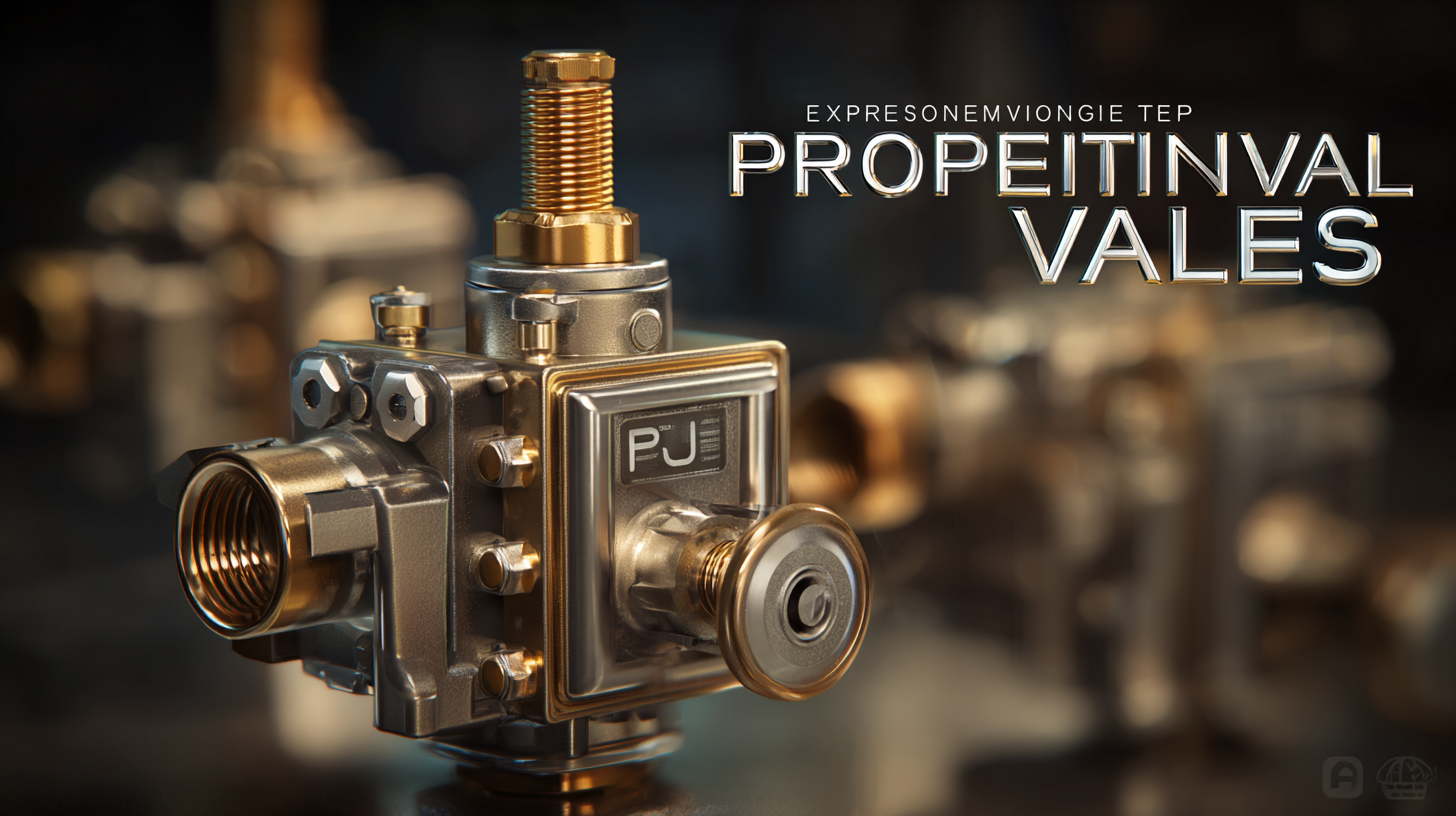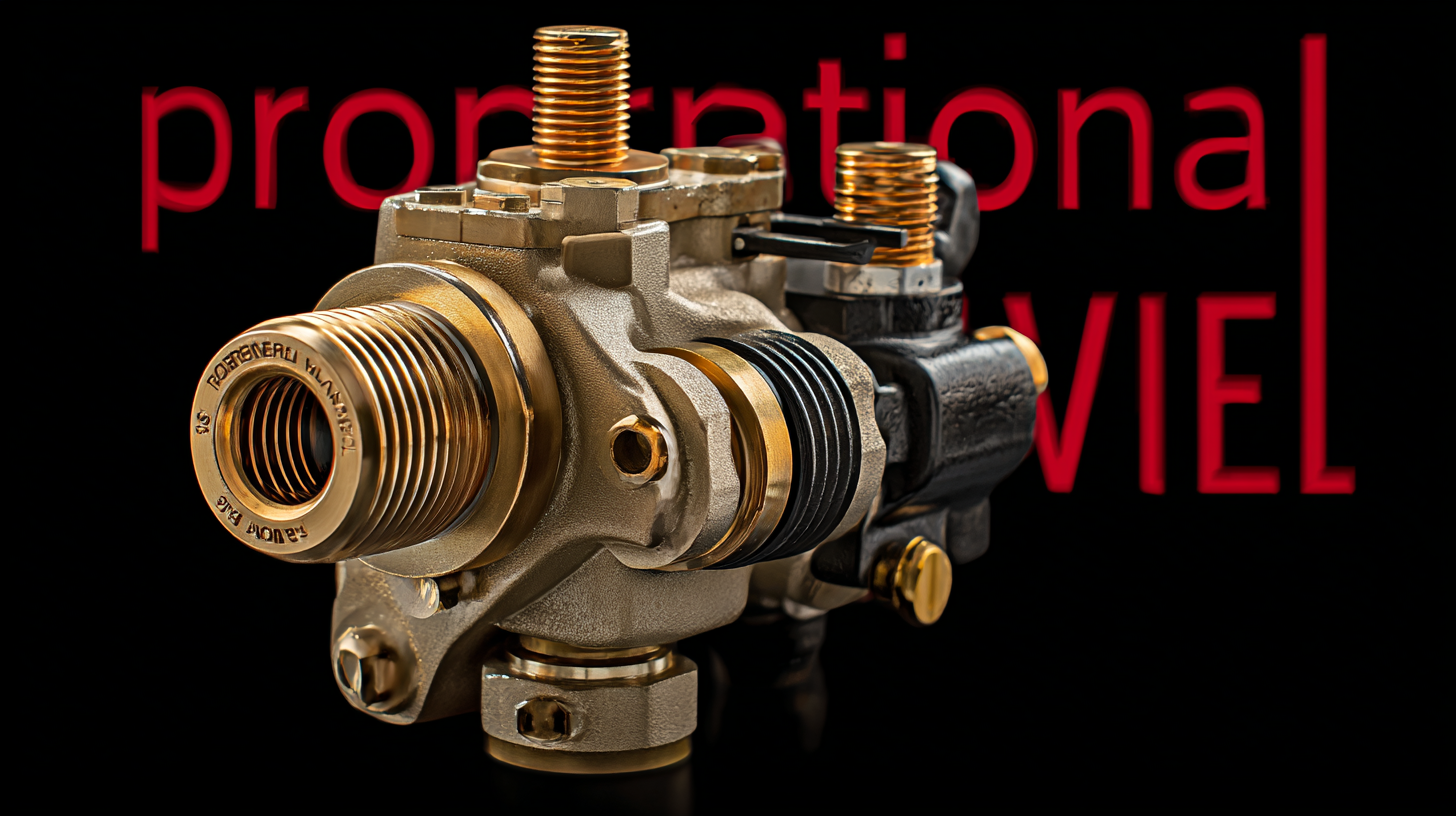Exploring the Top 5 Examples of Best Proportional Valves for Global Buyers
In the evolving landscape of industrial automation, the demand for precise control solutions has prompted the exploration of
Proportional Valves, crucial components that adjust flow rates and pressures with high accuracy. These valves play a vital role in
various applications, from hydraulic systems to pneumatic controls, ensuring optimal performance and efficiency. As global buyers seek quality and reliability, it becomes
essential to identify the best examples of Proportional Valves available in the market.

This blog delves into the top five Proportional Valve options sourced from China's premier manufacturing facilities, highlighting not only their technical specifications
and unique features but also the advantages they offer to enhance operational excellence. Join us as we uncover the
best choices that stand out in performance and value for procurement strategies worldwide.
The Importance of Proportional Valves in Modern Hydraulic Systems
Proportional valves play a crucial role in modern hydraulic systems, facilitating precise control over fluid dynamics, which is essential for optimizing performance in various applications. As industries continue to embrace automation and advanced technology, the demand for efficient hydraulic components has surged. Proportional valves allow for fine-tuning of flow rates and pressure levels, resulting in improved accuracy and responsiveness of industrial equipment, particularly in heavy-duty mobile machinery.
The evolution of hydraulic systems is also being driven by advancements in I/O systems. With emerging communication standards and distributed architectures, hydraulic components are becoming more integrated and adaptive. This synergy not only enhances the functionality of proportional valves but also enables greater monitoring and diagnostics capabilities, leading to improved system reliability and maintenance. As these technologies progress, the significance of high-performance proportional valves becomes even more apparent, ensuring that modern hydraulic systems can meet the demands of agility and efficiency in increasingly complex industrial environments.
Exploring the Top 5 Examples of Best Proportional Valves for Global Buyers
| Example |
Type |
Flow Rate (L/min) |
Pressure Rating (bar) |
Control Mechanism |
| Model A |
Electro-hydraulic |
30 |
250 |
Digital |
| Model B |
Pneumatic |
20 |
200 |
Analog |
| Model C |
Hydraulic |
50 |
300 |
Closed loop |
| Model D |
Proportional |
25 |
150 |
Pressure compensated |
| Model E |
Smart valve |
40 |
400 |
Variable control |
Key Features to Look for in Proportional Valves for Optimal Performance
When selecting proportional valves for optimal performance, key features are paramount. These valves play a critical role in managing parameters such as flow rate and pressure, which are essential in various industrial applications.
Advances in microelectronic technology and digitization have given rise to more sophisticated designs, allowing for precision control even in demanding environments.
For example, recent innovations include miniature poppet valves that incorporate magnetic technology, enhancing response times and efficiency.
One essential feature to look for is the force/stroke characteristic; this directly affects actuator performance. A good proportional valve should provide smooth and responsive motion throughout its operational range. Furthermore, durability and power capacity are crucial, especially for applications in extreme conditions, ensuring longevity and reducing maintenance costs.
Tips: Always consider the specific application requirements when choosing a valve. For high-power applications, opt for valves that provide robust performance metrics, while for softer pneumatic needs, look for magnetorheological elastomer-based options for flexibility. Additionally, multi-objective optimization in valve design can lead to low-power consumption without sacrificing performance, making it an attractive choice for energy-conscious operations.
Top 5 Proportional Valve Models: A Comprehensive Review
Proportional valves play a critical role in various fluid control applications, allowing precise regulation of flow and pressure. According to a recent market research report by Global Industry Analysts, the proportional valve market is projected to reach over $3.1 billion by 2026, growing at a CAGR of 4.9% from 2021. This growth is driven by the increasing adoption of automation technologies in industries such as manufacturing, automotive, and aerospace.
One standout model is the Parker X-valve, which boasts an impressive response time and high durability suited for industrial applications. It features advanced feedback loops for enhanced accuracy and control, making it a preferred choice among professionals. Another exemplary model is the Bosch Rexroth Proportional Pressure Control Valve, known for its robustness and reliability under high-pressure conditions, aligning with the industry's demand for resilient components. These valves exemplify the critical advancements in technology ensuring optimal performance and efficiency in fluid management systems, responding effectively to market demands for more sophisticated solutions.
The continuous innovation in designs, such as the introduction of digital controls in the Moog Proportional Valve, highlights the industry's focus on meeting diverse operational requirements. As manufacturers prioritize energy efficiency, models like the SMC Proportional Pressure Control Valve are gaining traction due to their ability to minimize energy consumption while maintaining high functionality in pneumatic systems. The growing emphasis on sustainability and efficiency further underscores the relevance of these top models in the global market.
Future Trends in Proportional Valve Technology for 2025 and Beyond
In recent years, the proportional valve market has witnessed significant advancements driven by technological innovation and growing industry demands. As projected in a report by Market Research Future, the global proportional valve market is expected to reach USD 6.9 billion by 2025, with a compound annual growth rate (CAGR) of 5.8%. This growth is largely attributed to the increasing automation in industries such as manufacturing and automotive, where precision control of fluid flow is critical.
Looking forward to 2025 and beyond, key trends in proportional valve technology are expected to prioritize energy efficiency and smart features. The integration of IoT (Internet of Things) capabilities into valve systems will enable real-time monitoring and predictive maintenance, reducing downtime and operational costs. Furthermore, advancements in materials and miniaturization techniques will lead to lighter, more durable valves that perform reliably under demanding conditions. According to a report by Research and Markets, the demand for smart hydraulic systems is projected to grow significantly, indicating that the future of proportional valve technology will not only enhance performance but also contribute to more sustainable industrial practices.

Guidelines for Choosing the Right Proportional Valve for Your Applications
When choosing the right proportional valve for your applications, it is essential to consider various factors that can influence performance and efficiency. Proportional valves are widely used in several sectors, including industrial automation, aerospace, and medical devices. Understanding the specific requirements of your application will lead to better decision-making.
 Tip 1: Begin by evaluating the flow requirements of your system. Each application demands different flow rates and pressures. When selecting a proportional valve, ensure it can accommodate these specifications without compromising performance.
Tip 1: Begin by evaluating the flow requirements of your system. Each application demands different flow rates and pressures. When selecting a proportional valve, ensure it can accommodate these specifications without compromising performance.
Tip 2: Consider the type of control needed for your application. For example, some systems might require precise positioning and feedback mechanisms, while others may work effectively with simpler controls. Choose a valve that aligns with your control strategy.
Additionally, pay attention to the compatibility of materials, especially in sectors such as healthcare or food processing, where hygiene and safety standards are stringent. By thoroughly assessing these aspects, you can select a proportional valve that not only meets your requirements but also enhances your operational efficiency.

















 Tip 1: Begin by evaluating the flow requirements of your system. Each application demands different flow rates and pressures. When selecting a proportional valve, ensure it can accommodate these specifications without compromising performance.
Tip 1: Begin by evaluating the flow requirements of your system. Each application demands different flow rates and pressures. When selecting a proportional valve, ensure it can accommodate these specifications without compromising performance.